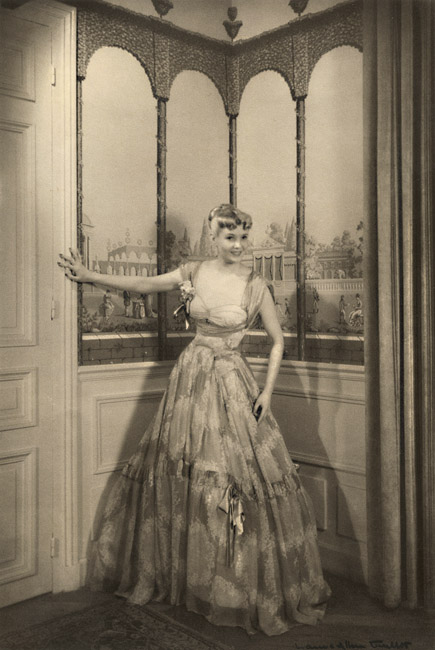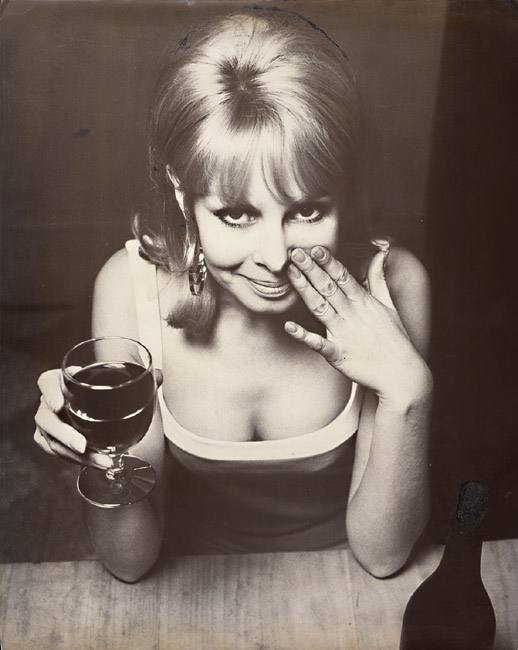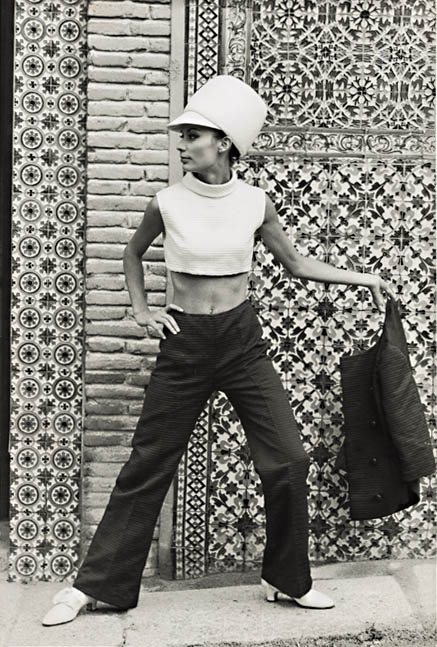Photography has been documenting fashion since a human being was first photographed (probably Louis Daguerre's 1839 image of a Paris street scene with a dandy getting a shoeshine).
The daguerreotypes in this Special Exhibit are a bit later (probably from the 1850s), but still show off the day's "mode de fashion". Women with their bonnets and decorative shawls wanted their images taken in their Sunday finery.
The mysterious Countess de Castiglione, Napoleon's lover, political moll, femme fatale, was the Cindy Sherman of her day. She would dress up and pose for her photographs, virtually all taken by Louis Pierson. These photographs were actually printed by the Braun studio after one of Pierson's daughters married into the Braun family in 1873 and the two studios united. Apparently, Pierson gave his negatives as a wedding gift.
Whether it is the early wedding attire of the woman in the stereo or the non-revealing bathing attire of the women in the pool, early fashion photography was both formal and casual, but largely non-commercial. Most of the fashion publications of the day could only be illustrated with prints, rather than photographs. That was to change as new technologies in the printing industry pushed photography into the fashion limelight.
It wasn't until the 20th century that fashion became the marketing juggernaut that we have all come to know. Combined with the changes in publication printing technology, photography was poised for it crucial role in the burgeoning fashion industry. At first it was just display books of original photography, and then later influential women's magazines printed the fashion photos in their pages to the delight of women all over the world.
Fashion photographers with talent began to be sought out and their hourly and daily rates soared. While the Great Depression slowed down the process, soon photographers and even their models (eventually "supermodels") became stars in their own right. Sometimes real Hollywood stars were used, such as Mary Pickford or the Gish sisters.
Photographers like Edward Steichen, who had been so influential as an art photographer of the Photo-Secession, turned commercial to cash in. Likewise Man Ray, Maurice Tabard, Laure Albin-Guillot, Irving Penn, Baron De Meyer, Ilse Bing, Paul Horst and later Robert Doisneau were all enticed by the money and the celebrity.
In the 1960s, with the film "Blow-up" glamorizing the life of the fashion photographer, and the new Brit fashion invasion, photographers and models took on the superstar personas that they are now known for.
Exhibited and Sold By
Contemporary Works / Vintage Works, Ltd.
258 Inverness Circle
Chalfont, Pennsylvania 18914 USA
Contact Alex Novak and Marthe Smith
Email info@vintageworks.net
Phone +1-215-518-6962
Call for an Appointment














Share This